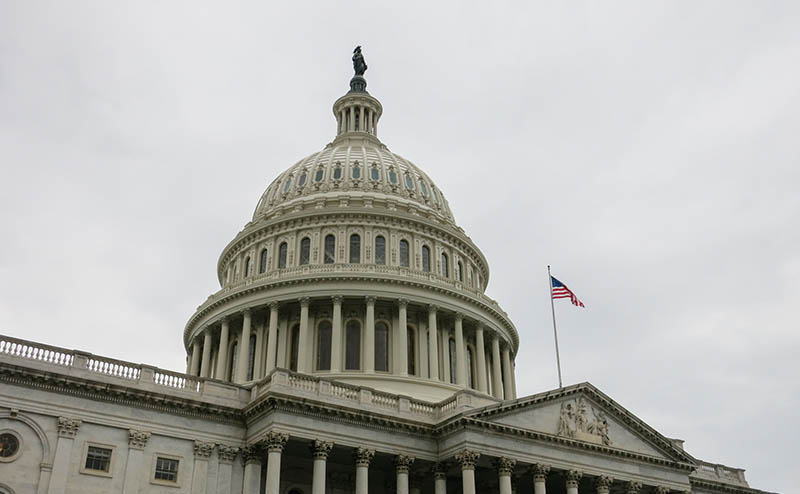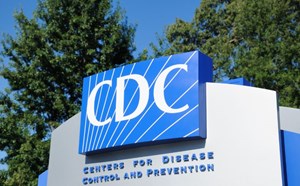Please continue to visit this page for shutdown updates as the situation continues to evolve. Additions will be marked as New.
UPDATE (10/16): Day 16 of the shutdown. What does this mean for you?
Medicare Payment Holds New
Several funding extensions for programs expired on September 30, 2025 when Congress was unable to reach a deal on funding the government, including the 1.0 GPCI floor for physician work as well as the telehealth waivers (more below) that date back to the COVID-19 pandemic. As a result, on October 1 CMS instructed Medicare Administrative Contractors (MACs) to hold payments for 10 business days to avoid mass reprocessing if Congress includes funding changes for these programs in any government funding deal it ultimately is able to reach. Since electronic Medicare claims are already subject to a 14-day payment floor during normal operations, this has so far had minimal impact to you and other clinicians.
During the current 10-day hold, MACs will separate out fee-for-service (FFS) claims not impacted by any expired funding provisions and start to pay them out at the end of the hold period, even as the shutdown continues. For FFS claims related to telehealth and those from emergency physicians (and other clinicians) in a geographic area with a GPCI work floor below 1.0, the claims will be held without payment until either the government shutdown ends, or CMS provides further instruction to MACs.
What is the GPCI Floor and Why Is It Important?
Medicare adjusts Physician Fee Schedule payments to reflect local costs using the Geographic Practice Cost Index (GPCI). There are three separate GPCIs—work, practice expense, and malpractice—that scale a service’s RVUs before multiplying by the conversion factor. A GPCI below 1.0 means payments in that area are adjusted down relative to the national average; above 1.0 adjusts up. Historically, Congress has often enacted a temporary floor of 1.0 for the work GPCI, ensuring physicians aren’t paid less than the national average for the work RVU component solely due to geography. When that statutory floor expires, as it did on September 30, payment for impacted services furnished in those areas will be reduced. Funding extensions by Congress for the GPCI floor are sometimes retroactive, so holding claims prevents MACs from paying under one formula and then having to rework every claim after the fact.
When You’ll Feel It
• The hold applies to dates of service on/after October 1.
• Medicare already applies a 14-day payment floor to electronic claims, and there’s a typical lag between service and submission.
• As a result, cash-flow impacts will begin to hit later this month if the shutdown continues—potentially significant, since the hold could affect almost all Medicare FFS billings for an emergency physician in an impacted locality.
Could CMS Pay Now?
Yes. CMS can instruct MACs to pay under the current formula and reprocess after the shutdown ends. But this would require substantial administrative work and cost, so the agency may hesitate to take that step absent a prolonged disruption.
What You Can Do Now
• Check whether your practice locations fall in an impacted locality ([Impacted localities table]).
• Model cash-flow scenarios for Medicare FFS billings from October 1 forward.
• Coordinate with your billing vendor to track held claims separately so they can be released or reprocessed quickly if guidance changes.
• Monitor your MAC's website: Check the website for your local Medicare Administrative Contractor (MAC) for specific updates.
What ACEP is Doing
ACEP is actively monitoring the situation and advocating with CMS to authorize payment for affected physicians if the shutdown persists. We’ll update members promptly as CMS or Congressional actions clarify payment timing and the status of held claims.
Medicare Telehealth
The temporary telehealth waivers that have been in place in Medicare since the COVID-19 public health emergency (PHE) have lapsed, meaning that the restrictions in place pre-COVID have returned for non-behavioral or mental health services. These include prohibiting many telehealth services provided to beneficiaries in their homes and outside of rural areas, and hospice recertifications that require a face-to-face encounter. The ability to provide audio-only telehealth services, as well as the Acute Hospital Care at Home program, have also expired.
Seniors reliant on this care who are suddenly unable to access it may now instead go to the emergency department, potentially resulting in increased patient loads.
Additionally, emergency physicians who provide telehealth services themselves should be aware that the Medicare telehealth rules will revert to their pre-PHE state and should adjust accordingly. It is important to note here that Medicare Advantage plans (which cover more than half of the total Medicare population) can still employ the PHE-era flexible Medicare telehealth coverage policies, as well as physicians in some ACOs. The new restrictions the shutdown will bring only apply to traditional Medicare. Thus, as a Medicare beneficiary, coverage of telehealth services could differ depending on what part of Medicare program they are enrolled in. This will only further confusion among clinicians in Medicare and Medicare beneficiaries.
Medicaid
CMS has sufficient funding for Medicaid to fund the first quarter of FY 2026, based on the advance appropriation provided for in the Full-Year Continuing Appropriations and Extensions Act, 2025. A shutdown that goes beyond the first quarter of FY 2026 could result in delayed payments to states, although that is unlikely (the longest shutdown to date was 35 days). CMS is unlikely to approve state plan amendments and waivers during a government shutdown, although review can occur in the background.
Public Health and Other Federal Services
Other federal essential services are not expected to be affected, and ACEP is reviewing guidance from federal agencies, including that recently posted by the U.S. Department of Health & Human Services, which states that the following agency activities will continue during a shutdown:
- The National Institutes of Health (NIH) will continue research and clinical activities to protect human life or government property.
- The Centers for Disease Control and Prevention (CDC) will continue monitoring for disease outbreaks.
- The Food and Drug Administration (FDA) will continue supporting food and medical product recalls and monitoring and responding to outbreaks related to foodborne illnesses, and will continue to exempt activities to support drug and medical device reviews.
- Payments to eligible states for the Children's Health Insurance Program (CHIP).
- Federal Marketplace activities.
- Federal Independent Dispute Resolution claims (under the No Surprises Act) will continue to be processed and adjudicated.
Federal Employment New
Formal reductions in force (RIFs) began on October 10 across parts of the federal government, including HHS. Media and agency confirmations indicate that CDC, SAMHSA, and ASPR were among the HHS components affected. CDC issued roughly 1,300 layoff notices, more than half of which were rescinded over the weekend, but hundreds of staff remain impacted; preparedness and biodefense functions (including some ASPR roles) were hit particularly hard. Other departments are also reporting layoffs as the shutdown continues.
Details continue to shift as agencies sort out errors and operational needs during the shutdown. Standard shutdown exemptions (e.g., activities necessary for life and safety or the protection of property) still apply, but RIFs are distinct from furloughs and do not automatically track those exemptions.
On 10/15/25, a federal judge issued an injunction temporarily blocking the administration from carrying out federal employee layoffs at most agencies. The administration is expected to appeal the decision in the coming days, so the situation in terms of these and potential future RIFs is increasingly fluid.
What Is ACEP Doing?
ACEP continues to educate members of Congress on the specific implications a shutdown will have on emergency care and their constituents and is urging a prompt resolution to government funding negotiations.
Following repeated misleading assertions from Congressional leaders that the government has been shut down due to demands for federal funding of free emergency care for undocumented immigrants, ACEP released a statement reaffirming that emergency physicians care for everyone who needs help, regardless of of insurance status, immigration status, or ability to pay.
We are actively monitoring congressional negotiations and will provide guidance to ACEP members as additional information becomes available.
What Happens After the Shutdown?
In previous government shutdowns, Congress has retroactively restored funding and any lapsed policies up to the start of the shutdown. As of right now it is unclear how long any government shutdown may last, how exactly it would be resolved, and, following that, the extent of retroactive relief, if any.





